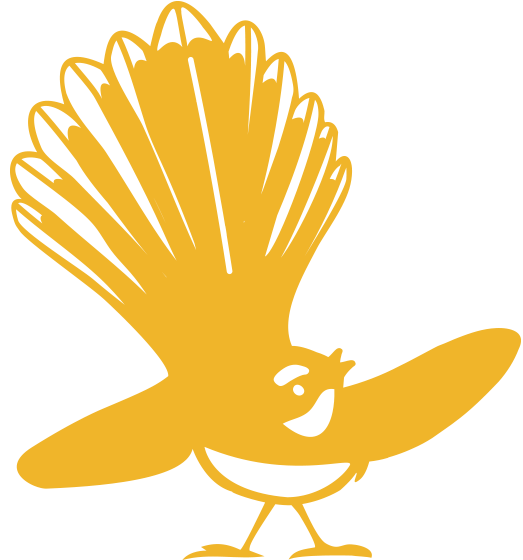MAP / HERITAGE TRAIL / DI MADGIN’S GARDEN
MAP / HERITAGE TRAIL /
DI MADGIN’S GARDEN
Di Madgin’s Garden

(To access Di Madgin’s Garden, keep going along River Road on the western side of the river and don’t cross the river at Medbury Bridge. We’ll return to the bridge in a bit!)
The mauri of a garden
Nests and tree branches are where birds like me like to rest and roost! For Di Madgin, the former owner of this property at 373 River Road, this garden was her tūrangawaewae: the ‘standing place’ where she felt connected and ‘at home’.

In a television news interview in 2018, Di expressed her deep emotional bond with this land, on which she and husband Bill Hammond shared a 1920s house. She walked the interviewer around the garden, sharing memories associated with various trees and plants. As they paced the lawn, she described the rooms of her demolished house, drawing from her recollections of living here.
Plants & kōrero
Plants are often associated with personal stories: they might be planted to mark your significant human events such as wedding anniversaries or bereavement. In Māori lore, too, plants and trees play a central role and are important to both people and the land (as well as birds like me!).
Tree plantings can also mark significant communal events or contributions of local people. Many trees throughout the city have plaques at their base, hinting at important moments in civic history (unfortunately, these stories are often lost to community memory!).
Di was a gardening feature writer for The Press Te Matatika newspaper and guided garden tours. She understood how plants and gardens have both a personal and communal impact on people. Even though the land here no longer belongs to Di, she expressed gratitude to the volunteers who continue to weed and tend what was once her garden. (Di died in August 2024).
What trees, plants and gardens contain personal stories and community memories for you?
Links to more info about Di’s wonderful garden:
Next steps:
Become a volunteer planter:
